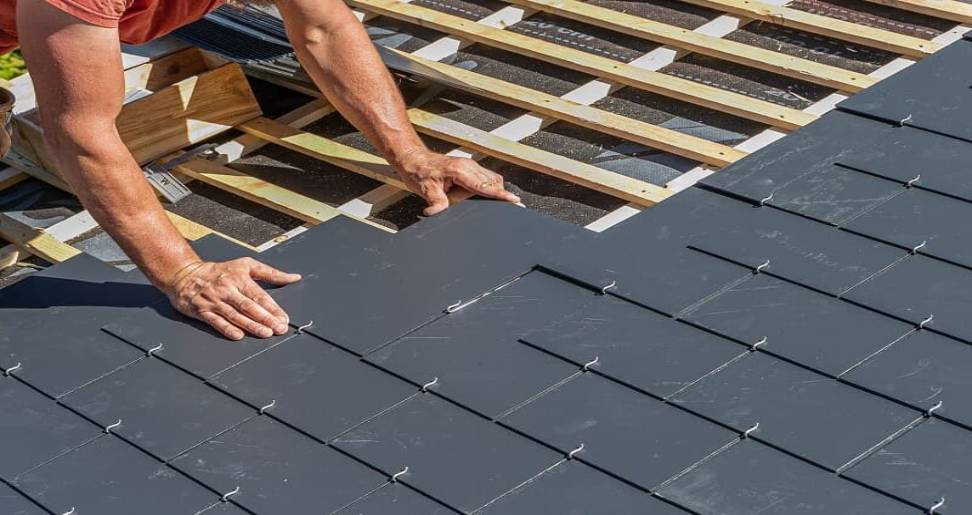Residential roofing is a critical component of any home, providing essential protection against the elements and contributing to the overall aesthetic appeal. Whether you’re considering installing a new roof or replacing an existing one, understanding the various aspects of residential roofing can help ensure a successful project. This article provides an in-depth look at key considerations in residential roofing, focusing on roof installation and residential roofing system replacement.
Roof Installation
Roof installation is a crucial step in establishing a reliable and durable roofing system. The process involves several key stages, each requiring careful attention to detail to ensure optimal performance and longevity.
1. Selecting the Right Roofing Material
Choosing the appropriate roofing material is essential for the success of your roof installation. Common options include asphalt shingles, metal roofing, tile, and slate. Each material has its own set of advantages and considerations, such as durability, energy efficiency, and aesthetic appeal. Consulting with a professional roofing contractor can help you select a material that best fits your home’s needs and your personal preferences.
2. Preparing for Installation
Before installation begins, proper preparation is vital. This includes removing the old roofing material, inspecting the underlying structure for any damage, and making necessary repairs. Ensuring a clean and stable substrate is crucial for the new roofing material to adhere properly and perform effectively.
3. Installation Process
The installation process involves laying down the roofing material according to the manufacturer’s guidelines and industry standards. This typically includes applying a layer of underlayment to provide an additional barrier against moisture, followed by the installation of the primary roofing material. Proper flashing around roof features such as chimneys and vents is also essential to prevent water infiltration.
4. Quality Assurance
Once installation is complete, a thorough inspection should be conducted to ensure that all components are installed correctly and that there are no issues that could compromise the roof’s performance. This may involve checking for proper alignment, securing of fasteners, and ensuring that all flashing and seals are intact.
Residential Roofing System Replacement
Over time, even the most well-maintained roofs will require replacement due to wear and tear, damage, or changes in building codes. Residential Roofing System Replacement is a significant undertaking that involves several key steps to ensure a successful outcome.
1. Assessing the Need for Replacement
Determining whether a roof needs to be replaced involves evaluating its current condition and performance. Common signs that replacement may be necessary include extensive shingle damage, leaks, structural issues, or age-related deterioration. A professional roofing contractor can conduct a comprehensive assessment to help you make an informed decision.
2. Choosing a Replacement System
When replacing a roofing system, it’s important to select a new system that meets your home’s requirements and aligns with your preferences. This may involve choosing new roofing materials, updating insulation, or addressing any structural issues that may have arisen since the original installation. A roofing professional can guide you through the selection process and provide recommendations based on your specific needs.
3. Removal of Existing Roofing
The replacement process begins with the removal of the existing roofing system. This involves stripping away the old materials, including shingles, underlayment, and any damaged components. Proper disposal of the old roofing materials is also an important consideration to ensure that the replacement process is environmentally responsible.
4. Installation of the New Roofing System
With the old roofing materials removed, the new roofing system can be installed. This process follows similar steps to a new roof installation, including preparing the substrate, installing underlayment, and applying the new roofing material. Attention to detail during this phase is crucial to ensure that the new system is installed correctly and provides the desired performance.
5. Final Inspection and Maintenance
After the new roofing system is installed, a final inspection should be conducted to verify that all aspects of the installation are complete and that the roof meets industry standards. Additionally, establishing a regular maintenance routine can help extend the life of the new roof and prevent future issues.
Conclusion
Understanding the intricacies of residential roofing, from installation to replacement, is essential for homeowners seeking to ensure the long-term performance and reliability of their roofing system. By carefully considering factors such as roofing materials, installation processes, and replacement needs, you can make informed decisions and achieve a roofing solution that enhances the protection and value of your home. Consulting with experienced roofing professionals can further ensure that your roofing project is completed to the highest standards, providing you with peace of mind and a durable roof for years to come.
Additional:
- Where To Find The Best Panama Food?
- Top 10 Best Bachelorette Party Destinations
- How To Meet The Swimming Pigs Of The Bahamas?


